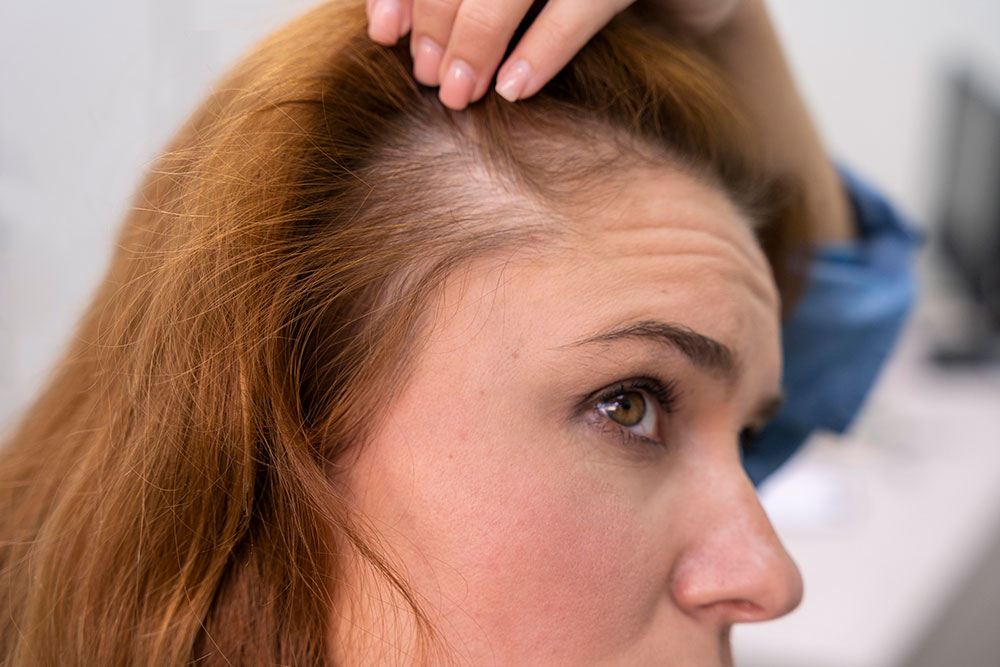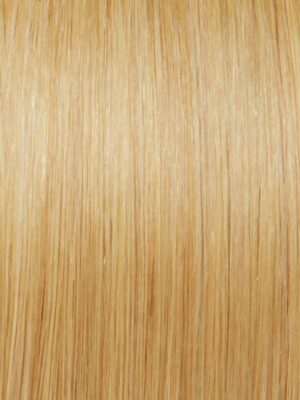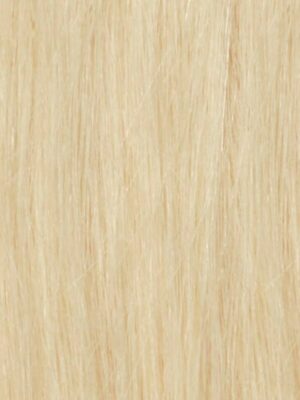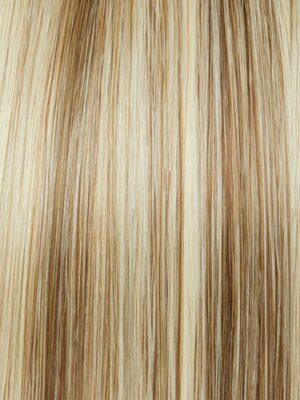Alopecia, a condition characterized by hair loss, can be a challenging journey, affecting not just physical appearance but also self-esteem and emotional well-being.
As an expert in hair care and treatment, I understand these struggles intimately. That’s why today, we’re going to explore a solution that can help individuals with alopecia regain confidence – skin weft hair extensions. This guide will provide an in-depth look at alopecia, the benefits of skin weft hair extensions, and how to choose, apply, and maintain them.
Understanding Alopecia
Before we dive into the world of hair extensions, let’s delve deeper into understanding alopecia.
What is Alopecia?
Alopecia is a medical term that refers to hair loss. This loss can occur anywhere on the body but is most noticeable when it affects the scalp. The condition varies greatly in severity, from small, isolated patches of hair loss to complete baldness.
Different Types of Alopecia
Alopecia isn’t a one-size-fits-all condition. There are various types, each with unique characteristics. These include
- Alopecia Areata (patchy hair loss),
- Androgenetic Alopecia (commonly known as male or female pattern baldness)
- Alopecia Totalis or Universalis (complete hair loss on the scalp or body).
Emotional and Psychological Impact of Alopecia
The impact of alopecia isn’t just skin (or scalp) deep. It also has a profound emotional and psychological effect. Hair is often tied to identity and beauty standards, and losing it can lead to feelings of embarrassment, anxiety, and depression. Acknowledging these feelings as part of the journey and seeking professional help if they become overwhelming is crucial.
Introducing Skin Weft Hair Extensions
Hair extensions are a popular solution for hair loss, and skin weft hair extensions, in particular, offer an excellent option for individuals with alopecia.
-
Beach Blonde (#613) Skin Weft Tape In Hair Extensions
$130.00 – $150.00 -
Light Blonde (#60) Skin Weft Tape In Hair Extensions
$130.00 – $150.00 -
Medium Ash/Beach Blonde (#8/613) Skin Weft Tape In Hair Extensions
$130.00 – $150.00
What are Skin Weft Hair Extensions?
Skin weft hair extensions, also known as tape-in extensions, are designed to mimic the appearance of hair growing directly from your scalp, providing a natural-looking result. They feature a thin strip (weft) that resembles skin, with high-quality human hair attached.
Benefits of Skin Weft Hair Extensions for Alopecia
These extensions offer several advantages for individuals with alopecia:
- They’re lightweight, reducing the risk of discomfort or further hair loss due to tension.
- The application process is gentle and doesn’t involve braiding, sewing, or tight bonds, which can potentially damage the scalp or existing hair.
- They provide a seamless blend with any existing hair, offering a natural look that can boost self-confidence.
The following sections will delve into professional consultations, choosing the right extensions, the application process, and maintenance. We’ll also explore potential discomfort and alternatives to consider if extensions aren’t your preferred option. Stick around as we navigate this journey to reclaiming your hair and your confidence and sense of self.
The Importance of Professional Consultation
Navigating the world of hair extensions can be daunting. That’s why consulting with professionals who understand the nuances of alopecia and hair extensions is crucial.
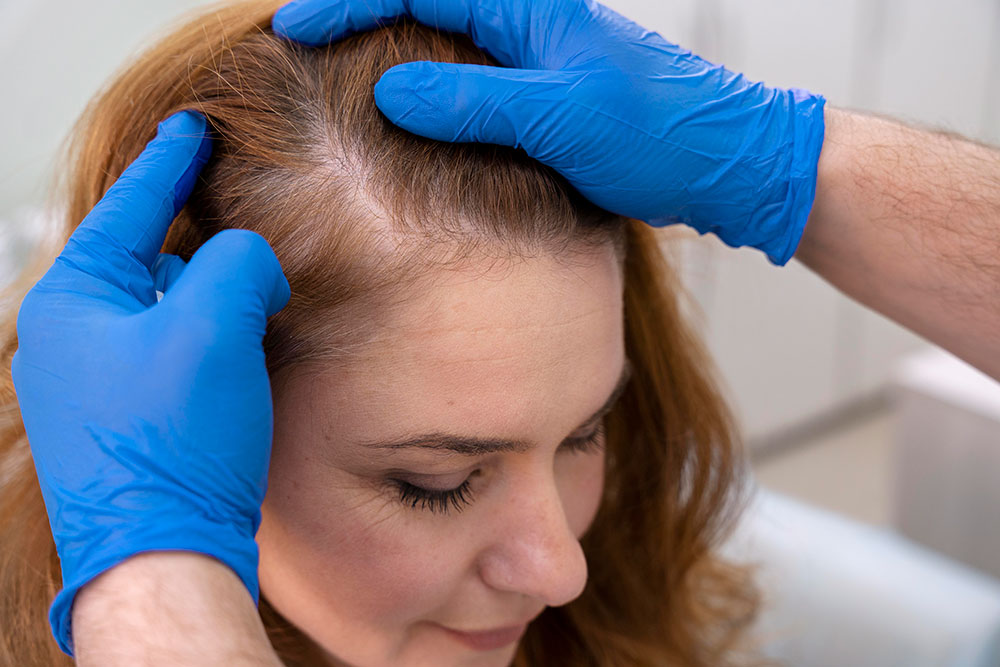
Why Consult a Professional Stylist or Trichologist?
Professional stylists and trichologists are trained to understand hair, scalp conditions, and their treatments. They can assess your hair type and the extent of hair loss and guide you toward the best kind of extensions for your needs. This way, you avoid unnecessary damage and get a customized solution that suits you perfectly.
What to Expect During the Consultation
During a consultation, your stylist will evaluate your hair and scalp health. They may ask about your lifestyle, hair care routine, and your expectations from the extensions. It’s the perfect opportunity to ask any questions you have about the process, maintenance, costs, and more.
Choosing the Right Skin Weft Hair Extensions
Choosing the right extensions is key to achieving a natural, seamless look.
Selecting the Best Color and Texture
Skin weft extensions come in various colors and textures. Choose a shade and texture that match your existing hair or your desired look closely. Your stylist can help guide you in this process to ensure you get a natural, seamless blend.
Opting for High-Quality Extensions
While it might be tempting to go for cheaper options, investing in high-quality human hair extensions can provide a more natural look and feel. They can be styled just like your natural hair, resist heat better, and generally last longer than synthetic options.
The Application Process for Skin Weft Hair Extensions
Once you have the right extensions, it’s time for the application process.
How Are Skin Weft Extensions Applied?
Using a special adhesive, the stylist attaches the skin weft extensions close to your scalp. This process is less damaging than other methods that involve braiding or sewing. A professional should always conduct it to avoid unnecessary damage to the scalp or hair.
The Role of the Professional in the Application
A professional stylist ensures that the extensions are correctly placed and that they blend naturally with your existing hair. They can also minimize any discomfort during the application and advise on the best care practices to ensure the longevity of your extensions.
Remember, the journey to regaining your hair doesn’t end with applying extensions. Next, we delve into how to care for your new hair.
Maintenance of Skin Weft Hair Extensions
Once you’ve installed your extensions, proper maintenance is key to preserving their quality and making them last.
Taking Care of Your Extensions
Treat your extensions with the same care as your natural hair. Use a gentle, sulfate-free shampoo, and follow up with a hydrating conditioner to keep the hair healthy and prevent dryness. Avoid tugging or pulling on your extensions to prevent causing tension at the roots.
Regular Maintenance Schedule
Regular maintenance is crucial for the longevity of your extensions. Depending on your hair growth, you must visit your stylist for adjustments every six to eight weeks. They’ll reposition the extensions to keep them close to the scalp and ensure they continue to look natural.
Comfort Considerations and Alternatives
While skin-weft hair extensions offer numerous benefits, comfort levels can vary between individuals.
Potential Discomfort with Hair Extensions
Some individuals with alopecia find hair extensions uncomfortable or even painful. If you experience discomfort, it’s crucial to communicate this with your stylist. They can adjust the extensions, suggest different application methods, or recommend alternatives.
Alternatives to Extensions
If extensions prove unsuitable, there are other options. Wigs, hairpieces, or scarves can provide stylish alternatives. Going without any hair coverings is also an empowering option if you’re comfortable with your appearance. Regardless of your choice, the goal is to make you feel comfortable and confident in your skin.
Though skin-weft hair extensions provide a temporary solution to hair loss and can significantly boost your confidence, they don’t address the underlying cause of your alopecia. Consulting with a medical professional can help you explore further treatments for hair loss.
Conclusion
Alopecia is a challenging journey that affects more than just your physical appearance. It’s okay to seek solutions that help you feel more like yourself. Skin weft hair extensions are one such solution that can provide you with a natural-looking, fuller head of hair. With the right consultation, high-quality extensions, professional application, and maintenance, you can confidently navigate the world of hair extensions. Whether you opt for extensions or not, remember – you are beautiful, just as you are.
We’ve covered a lot today, and I hope you’ve found this guide helpful. I encourage you to share your experiences and any questions you might have in the comments below. Let’s continue this conversation and support each other through the alopecia journey.

